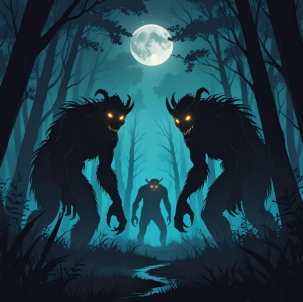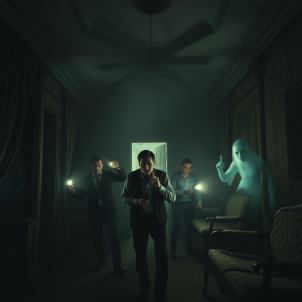
Monsters and Mysteries: Delving into the World of Cryptozoology
For centuries, humans have been fascinated by tales of mysterious creatures that inhabit the unexplored regions of our planet. From the legendary Loch Ness Monster to the elusive Bigfoot, these enigmatic beings have captured our imagination and sparked our curiosity. The study of these unknown animals is known as cryptozoology, a field that seeks to uncover the truth behind the myths and legends that have been passed down through generations.
What is Cryptozoology?
Cryptozoology is the study of hidden or unknown animals, whose existence is not yet proven or widely accepted by the scientific community. The term "cryptozoology" comes from the Greek words "kryptos," meaning hidden, and "zoology," meaning the study of animals. Cryptozoologists use a combination of scientific methods, including biology, anthropology, and sociology, to investigate reports of mysterious creatures and determine whether they are based on fact or fiction.
Famous Cryptids
Some of the most famous cryptids include:
- Bigfoot, also known as Sasquatch, a large, hairy, ape-like creature said to inhabit the forests of North America.
- The Loch Ness Monster, a mythical creature said to inhabit Scotland’s Loch Ness, described as a long-necked, serpentine creature.
- The Chupacabra, a legendary creature said to inhabit parts of the Americas, known for allegedly draining the blood of livestock.
- The Mothman, a creature reportedly seen in the Point Pleasant area of West Virginia, described as a large, winged creature with glowing eyes.
- The Jackalope, a mythical creature said to inhabit the American West, described as a rabbit with antlers.
Investigating Cryptid Sightings
Cryptozoologists use a variety of methods to investigate reports of cryptid sightings, including:
- Interviews with witnesses: Cryptozoologists conduct interviews with people who claim to have seen a mysterious creature, in order to gather more information about the sighting.
- Field research: Cryptozoologists conduct field research in areas where cryptid sightings have been reported, in order to gather evidence and data.
- Laboratory analysis: Cryptozoologists analyze physical evidence, such as hair samples or footprints, to determine whether they are from a known or unknown animal.
- Historical research: Cryptozoologists study historical accounts of mysterious creatures, in order to determine whether they are based on fact or fiction.
The Challenges of Cryptozoology
While cryptozoology can be a fascinating field of study, it is not without its challenges. Many scientists are skeptical of cryptozoology, and consider it to be a pseudoscience. Additionally, the lack of concrete evidence makes it difficult to prove the existence of many cryptids. Furthermore, the study of cryptozoology often involves dealing with misinformation, hoaxes, and misidentifications.
Conclusion
Cryptozoology is a fascinating field of study that seeks to uncover the truth behind the myths and legends of mysterious creatures. While it can be a challenging and controversial field, it has the potential to lead to new discoveries and a greater understanding of the natural world. Whether or not you believe in the existence of cryptids, the study of cryptozoology is a reminder that there is still much to be learned about our planet and its inhabitants. By delving into the world of cryptozoology, we can gain a deeper appreciation for the mysteries and wonders of the natural world, and perhaps, just perhaps, uncover the truth behind the monsters and mysteries that have captivated human imagination for centuries.


